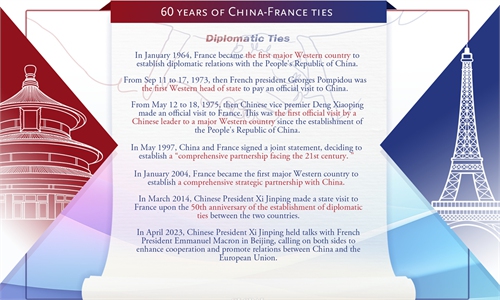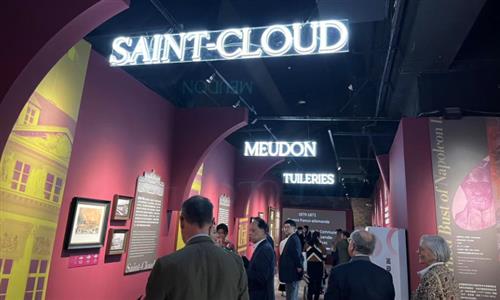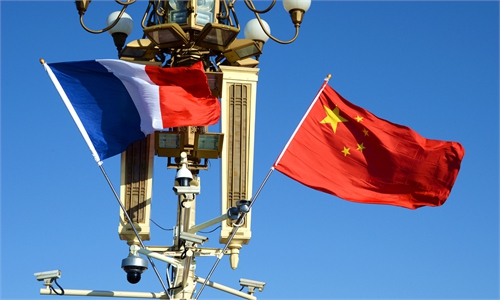ARTS / CULTURE & LEISURE
China, France sign strategic coop agreements in cultural exchanges
Centuries-old friendship ties
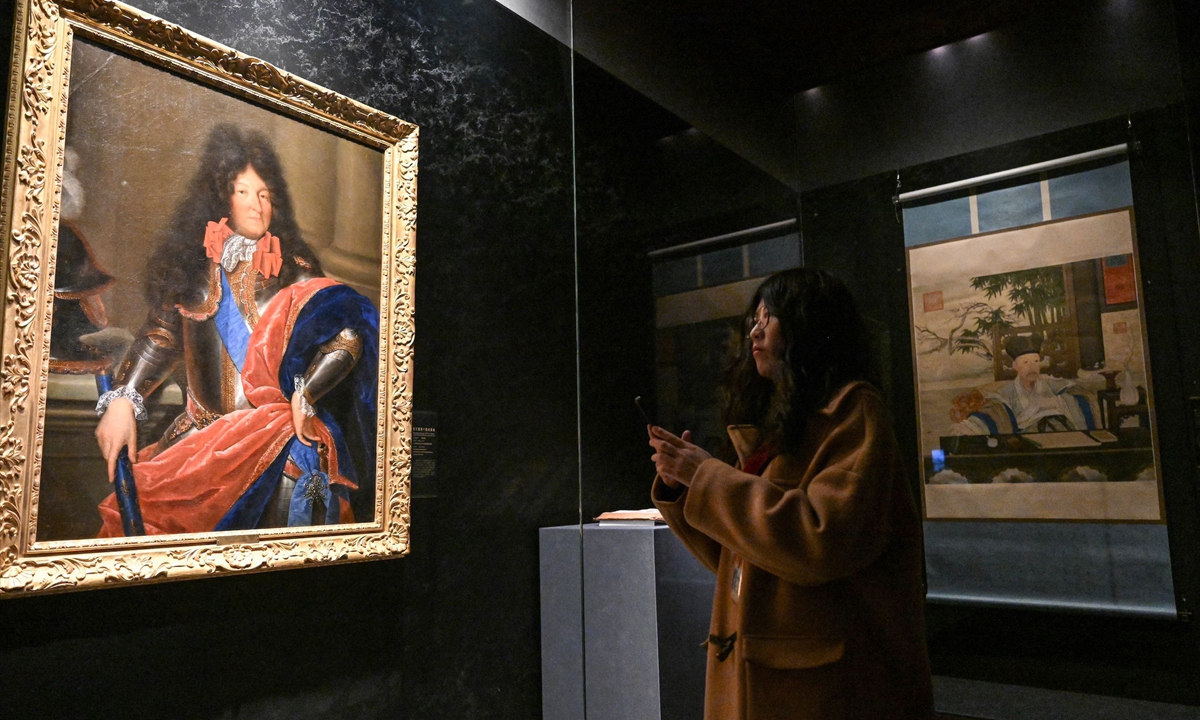
A visitor explores the Forbidden City and the Palace of Versailles: Exchanges Between China and France in the 17th and 18th Centuries exhibition at the Palace Museum on April 1, 2024. Photo: VCG
On Monday afternoon, the world top-class exhibition The Forbidden City and the Palace of Versailles: Exchanges Between China and France in the 17th and 18th Centuries officially opened at the Palace Museum. Officials and guests from both countries said the exhibition is one of the most important cultural events for celebrating the 60th anniversary of the establishment of diplomatic relations between China and France and the China-France Year of Culture and Tourism, and will help deepen mutual understanding and friendship between the people of the two countries.Hand in hand
The French Minister for Europe and Foreign Affairs Stephane Sejourne attended the opening ceremony. During the ceremony, the Palace Museum signed a strategic cooperation agreement with the Palace of Versailles and the Musée Guimet, the French national museum of Asian art. Through this signing, the two sides jointly confirmed their intention to continue promoting exchanges and cooperation in the future, according to a document that the Palace Museum sent to the Global Times on Monday.
The exhibition, which is set to end until June 30, showcases more than 200 exquisite cultural relics such as scientific instruments, clocks, enamelware, porcelain, paintings and books collected by museums in China and France. It focuses on the fascination of the French nobility and bureaucracy with Chinese artworks, as well as the influence of art on each other.
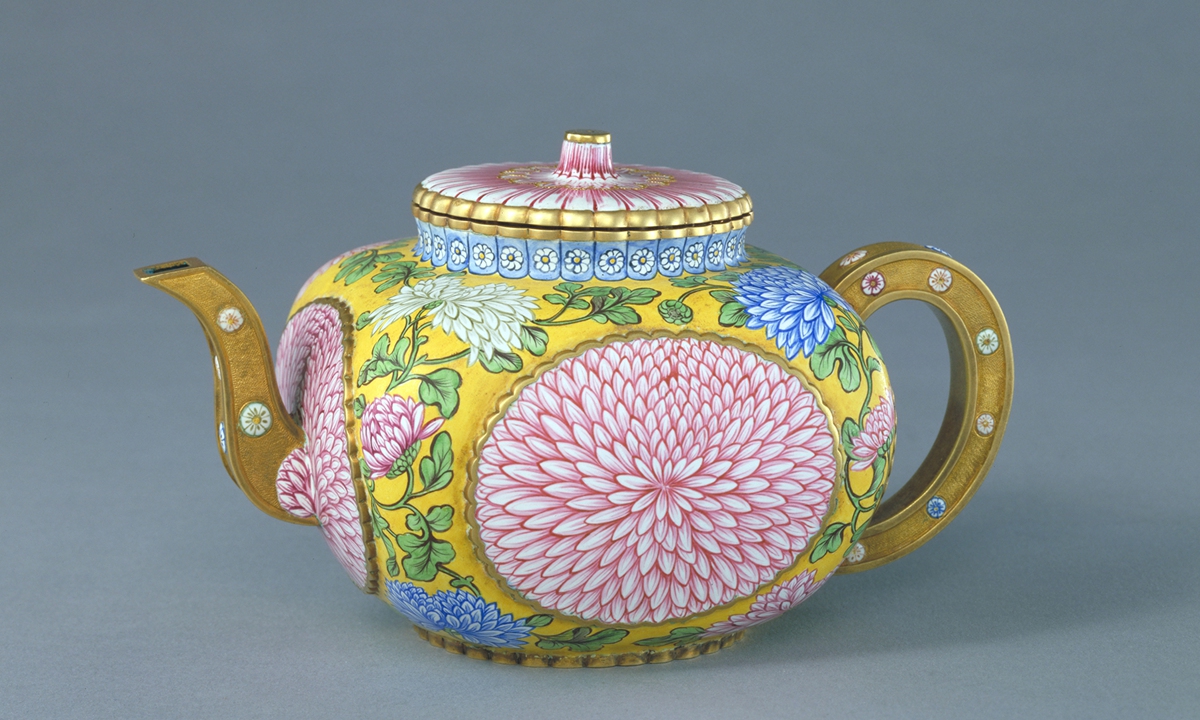
A Qing Dynasty pot collected by the Palace Museum Photo: Courtesy of the Palace Museum
According to an introduction of the exhibition, the late 17th to the 18th century was the golden age of exchange and cultural interactions between the Chinese and French courts. This period witnessed the strongest interest of the French royal court and its palaces in Chinese culture.Vincent Haegele, director of the libraries of Versailles, told the Global Times on Monday that during the 17th to the 18th century, a large number of Chinese crafts and books entered the collections of the French court and nobility, sparking a trend of "Chinese-style art" centered around the Palace of Versailles that spread throughout Europe. The French court preserved many items from China as well as Chinese-style artworks created in France, which became important evidence for understanding China-France relations and artistic exchanges during this period.
For example, the gilt copper watch with the portrait of Louis XIV (1643-1715) was most likely a gift from the king of France to the Emperor Kangxi in the Qing Dynasty (1644-1911), a tangible piece of evidence of the relationship between the two sovereigns.
Meanwhile, thousands of miles away in the Chinese court, from the dispatch of the "Royal Mathematicians" by Louis XIV to China onwards, a large number of French Jesuits came to China, many of whom served in the country for a long time. They had a significant impact on the Qing Dynasty court in many fields including science, art, architecture, medicine and cartography, the document noted.
Caroline Puel, a French writer who has visited the exhibition, told the Global Times that this exhibition has amazed her as she realized that China and France have been so closely tied together for several centuries. Their mutual attraction and interest have been deeply ingrained in historical memory, creating a fascinating story of exchange and mutual learning in the history of world civilization.
Yannick Lintz, president of the Guimet Museum, told the Global Times that she hoped the Chinese audience could enjoy the cultural relics feast and visit France for more cultural exploration.
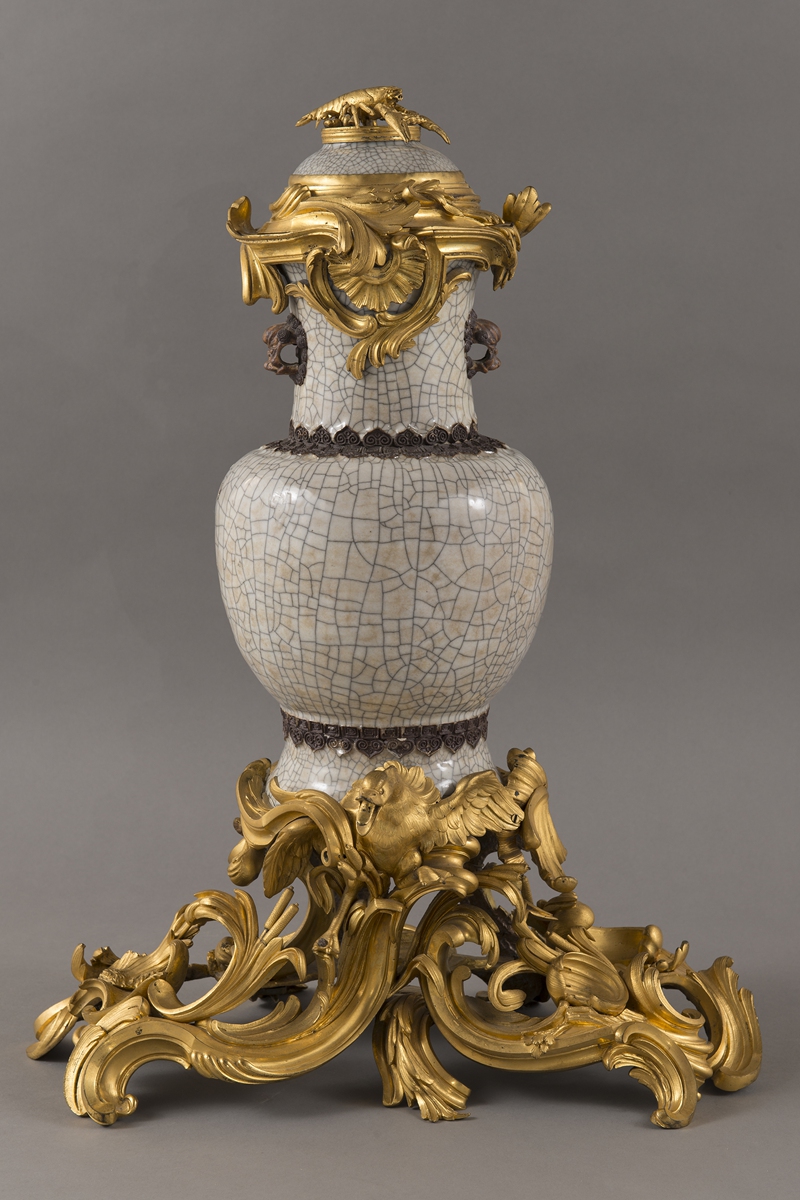
A perfume fountain collected by the Palace of Versailles Photo: Courtesy of the Palace Museum
New Napoleon exhibitionAnother important China-France cultural exchange exhibition Meet Napoleon: The Disappeared Palaces opened at the Beijing 798 Art Zone on Saturday.
The exhibition features 81 sets of antiques, presenting Napoleon's multifaceted life in three sections: Rise to power: Becoming Napoleon, The unknown facet: Protectors of Science and art, and Reprise: Life in Napoleon's Court.
It is one of the cultural exchange programs that French President Emmanuel Macron mentioned during his state visit to China in 2023, said French Ambassador to China Bertrand Lortholary at the exhibition's opening.
He felt "glad to see it" and explained that it was the start of a number of cultural events to mark the 60th anniversary of the establishment of China-France diplomatic relations.
According to Herve Lemoine, the director of the Mobilier national, the exhibition focuses on the Tuileries, Saint-Cloud and Meudon Palaces (all three destroyed today) and the furnishings of the time of Napoleon Bonaparte, first consul of the Republic, then emperor of France in the 18th and 19th century.
The mission of the Mobilier national is to ensure the conservation and restoration of its collections, the royal and imperial residences, and the official palaces of the Republic.
The objects on display at the exhibition include ceremonial furniture, art objects and decorative elements of the time like chairs, lamps and tapestries.
Multimedia and digital technology are also used to replicate the three ornate palaces.
Li Jinsheng, chairman of the China Arts and Entertainment Group Ltd, said that China and France have long engaged in extensive and in-depth exchanges and cooperation relating to the humanities, arts and other fields.
"This year, we will organize some events to showcase Chinese culture in France, allowing French audiences to appreciate the charm of Chinese culture," said Li.
During the China-France Museums and Cultural Exchange Salon following the opening, Hervé Lemoine said that the exhibition seeks to help visitors discover cultural commonalities and foster friendship and that he expects a bright future for the friendship between France and China.
Wang Chunchen, a professor at the Central Academy of Fine Arts and director of the Meet You Museum, said that this exhibition emphasizes history and cultural relics. "In addition to being portrayed as a politician and military strategist, Napoleon's ordinary life appeared in front of the Chinese audience. Like many Chinese audiences, I walked into Napoleon's life for the first time; I got to know the other side of him, as a man who loved culture and arts."
Wang believes that on this occasion of the 60th anniversary of the establishment of diplomatic relations between China and France, the exhibition helps Chinese audiences become immersed within the history and culture of France, and will also gain a sense of closeness with France.
The exhibition at the Meet You Museum will run until June 20.


